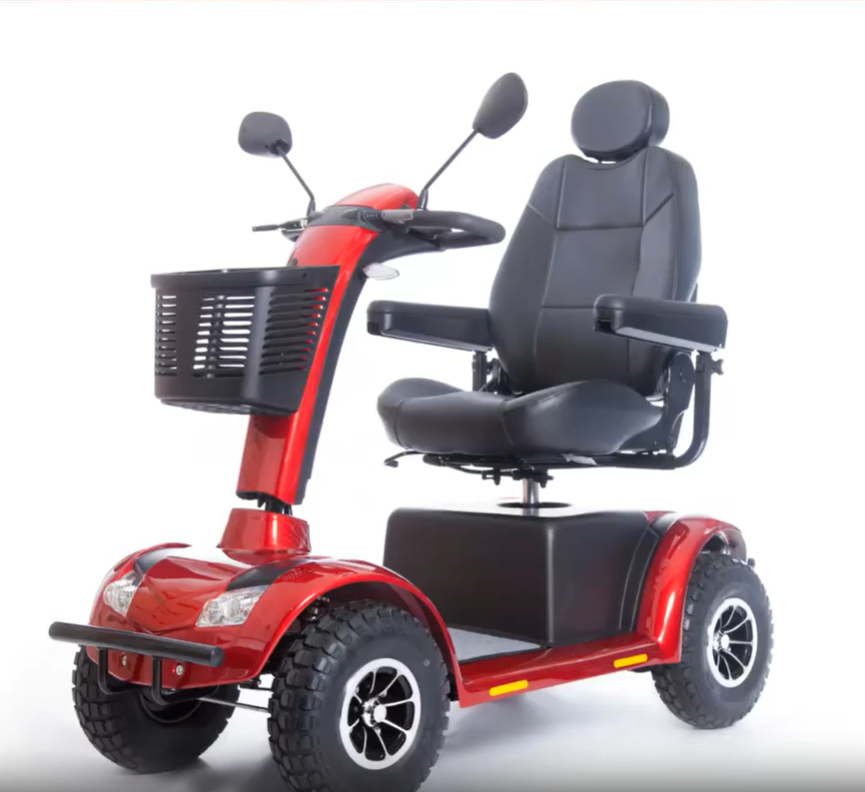The Complete Guide to Mobility Scooters for Seniors
Mobility scooters have revolutionized independence for millions of seniors worldwide, offering a reliable solution for those who struggle with walking longer distances but want to maintain an active lifestyle. Whether you're considering a mobility scooter for yourself or a loved one, understanding the various options, features, and considerations can help ensure you make the best choice for your specific needs and circumstances.

What Makes Mobility Scooters Different from Other Mobility Aids?
Mobility scooters stand apart from traditional mobility aids like walkers and canes by providing powered transportation rather than simple support. Unlike wheelchairs, which require upper body strength to propel manually or can be quite expensive when motorized, mobility scooters offer an intuitive, battery-powered solution that allows users to travel longer distances with minimal physical effort. They’re particularly beneficial for individuals who have limited walking endurance but retain good upper body strength and cognitive function to operate the controls safely.
How Do You Choose the Right Type of Mobility Scooter?
Selecting the appropriate mobility scooter depends on where and how you plan to use it. Three-wheel scooters offer better maneuverability in tight spaces and are ideal for indoor use and smooth outdoor surfaces. Four-wheel scooters provide greater stability and are better suited for outdoor terrain and longer distances. Travel scooters can be disassembled for transport in vehicles, while heavy-duty models support higher weight capacities and offer enhanced durability for frequent outdoor use.
What Key Features Should You Consider When Selecting a Mobility Device?
When evaluating mobility scooters, battery range stands as one of the most critical factors, with most models offering between 8-25 miles per charge depending on terrain and user weight. Seat comfort becomes essential for longer rides, with adjustable, swiveling seats providing the best user experience. Weight capacity varies significantly, from 250 pounds for lightweight models to over 500 pounds for bariatric options. Additional features like baskets, lights, and suspension systems can greatly enhance usability and safety.
Which Mobility Conditions Benefit Most from Scooters?
Mobility scooters prove most beneficial for individuals with conditions that affect walking endurance rather than balance or cognitive function. Arthritis sufferers often find scooters helpful for reducing joint stress during longer outings. People with heart conditions, COPD, or other conditions causing fatigue can maintain independence while conserving energy. However, individuals with severe balance issues, visual impairments, or cognitive decline may require alternative mobility solutions or additional safety considerations.
What Unique Advantages Do Modern Mobility Scooters Offer?
Today’s mobility scooters incorporate advanced technology that previous generations couldn’t imagine. Many models now feature USB charging ports for mobile devices, LED lighting systems for improved visibility, and even smartphone apps for battery monitoring. Some premium scooters include GPS tracking, anti-theft systems, and diagnostic capabilities that alert users to maintenance needs. Lithium battery options have significantly reduced weight while increasing range, and some models now offer quick-removal battery packs for convenient indoor charging.
How Do Mobility Scooter Costs Compare Across Different Models?
Understanding mobility scooter pricing helps ensure you find the best value for your needs and budget. Entry-level travel scooters typically start around $600-$1,200, while mid-range models with better features and durability range from $1,200-$2,500. Heavy-duty and luxury models can cost $2,500-$5,000 or more, depending on features and specifications.
| Scooter Type | Price Range | Key Features | Best For |
|---|---|---|---|
| Basic 3-Wheel | $600-$1,200 | Lightweight, compact, basic controls | Indoor use, short trips |
| Standard 4-Wheel | $1,200-$2,000 | Better stability, moderate range | Daily errands, outdoor use |
| Travel Scooter | $800-$1,800 | Disassembles, airline-approved | Frequent travelers |
| Heavy-Duty | $2,000-$3,500 | High weight capacity, extended range | Larger users, rough terrain |
| Premium Models | $3,000-$5,000+ | Advanced features, superior comfort | Daily use, maximum features |
Prices, rates, or cost estimates mentioned in this article are based on the latest available information but may change over time. Independent research is advised before making financial decisions.
Medicare and insurance coverage varies significantly, with some plans covering up to 80% of costs when medical necessity is established through proper documentation and physician prescription. Many suppliers offer financing options, and some non-profit organizations provide assistance programs for qualifying individuals.
Mobility scooters represent more than just transportation devices; they’re tools for maintaining independence, social connection, and quality of life. By carefully considering your specific needs, lifestyle, and budget, you can find a mobility scooter that opens up new possibilities rather than simply accommodating limitations. Remember that the best mobility scooter is the one you’ll actually use regularly and safely, so prioritize features that match your daily activities and long-term mobility goals.
This article is for informational purposes only and should not be considered medical advice. Please consult a qualified healthcare professional for personalized guidance and treatment.




